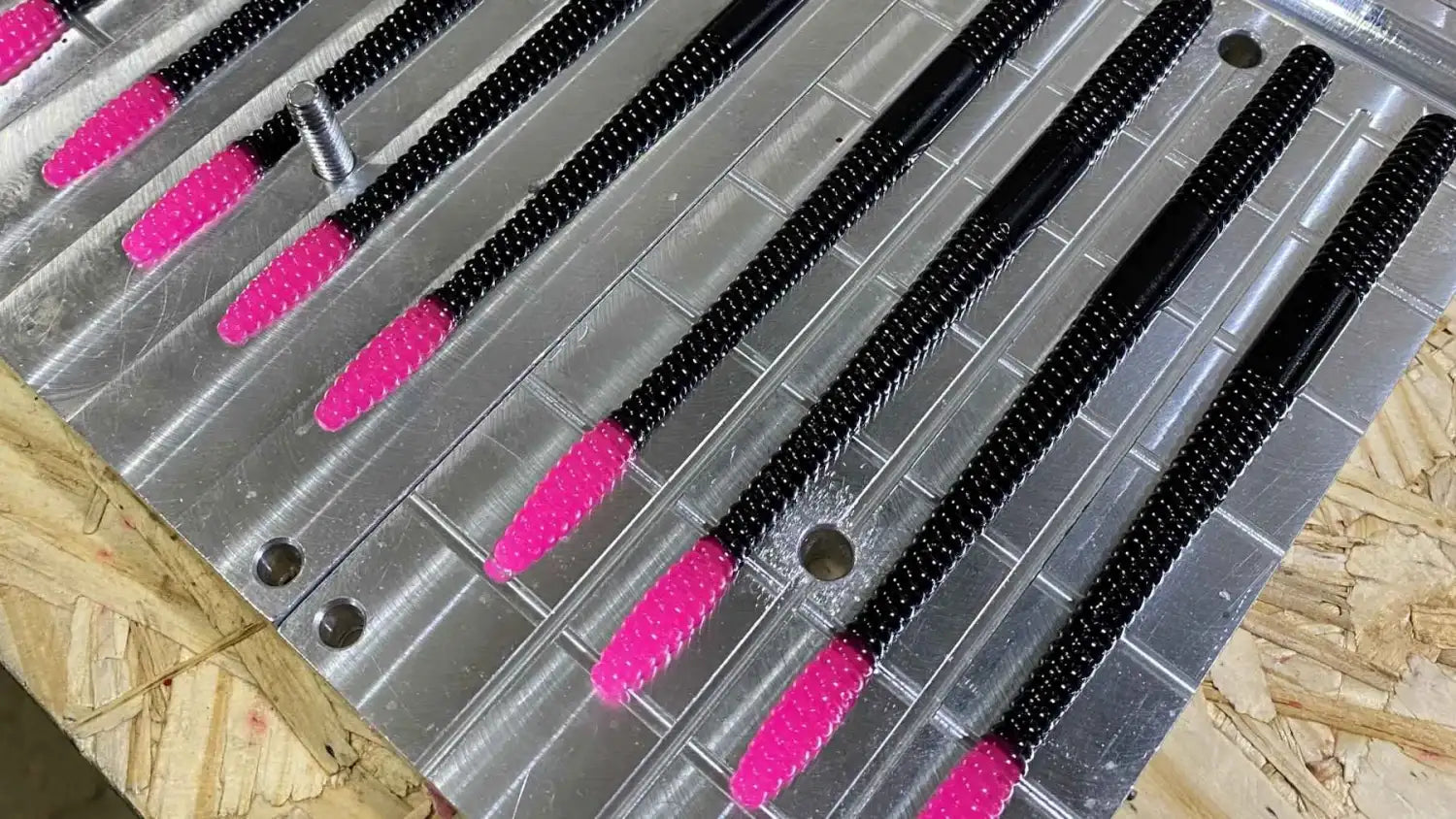
5 Proven Soft Plastic Worm Colors That Crush Bass (And When to Use Them)
Why Soft Plastic Worm Colors Matter More Than You Think
When it comes to bass fishing, everyone talks about gear, rod action, or jig heads. But here's something seasoned anglers know — color matters. Picking the best soft plastic worm color for bass can be the difference between a slow day and a full live well.
Worms are already killer lures because of their natural shape and versatility. But choosing the right color for the conditions? That’s where things get interesting — and effective.
How Bass See Colors: A Quick Breakdown
Bass don’t see color like we do. They have decent vision, especially in the green and red spectrum, but it all changes with water clarity and light levels. Here's how it plays out:
| Water Clarity | Best Color Spectrum | Notes |
|---|---|---|
| Clear | Natural, subtle | Bass get picky. Think realism. |
| Stained | Green, purple, chartreuse | Adds visibility without overkill. |
| Muddy | Black, blue, bright | Go bold or go home. |
In short: match the hatch and the visibility.
1. Green Pumpkin – The Undisputed King
If you’re only buying one pack of worms, make it green pumpkin.
Why it works:
-
Looks like almost everything bass eat — craws, baitfish, insects
-
Kills it in clear to lightly stained water
-
Pairs well with any rig: Texas, Carolina, shaky head
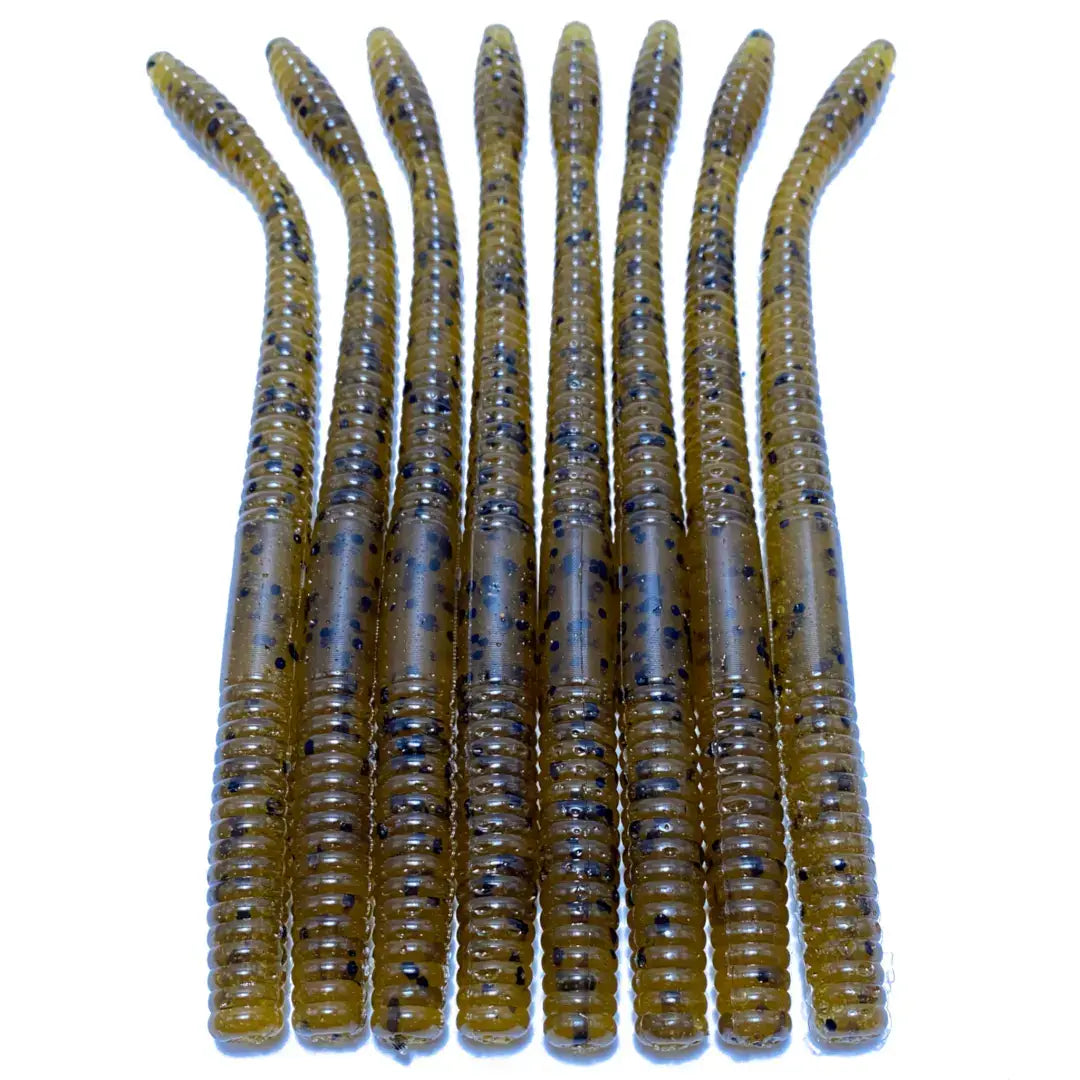
Obee 6" Finesse Worm | Green Pumpkin
Pro Tip: Try it with a flick of red or purple flake for extra flash in sunlight.
2. Black and Blue – The Muddy Water Monster
Got chocolate milk for water? Reach for black and blue.
Why it works:
-
High contrast grabs attention
-
Black silhouette stays visible deep
-
Blue flake reflects just enough light to get noticed
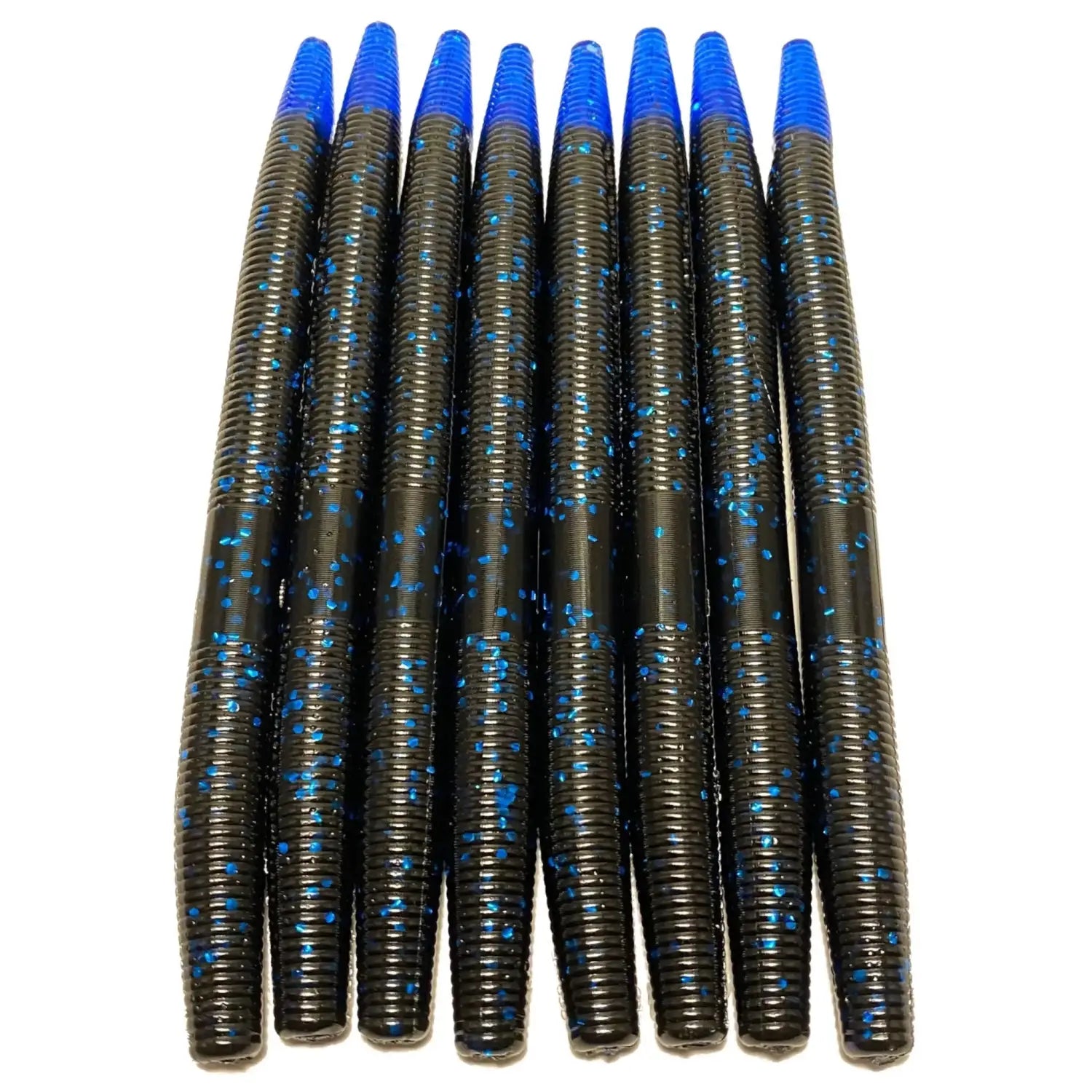
Obee 5" Stick Worm | Black Blue Flake
Best use: Pitching into heavy cover or flipping under docks when the water’s dirty.
3. Watermelon Red – Subtle with a Kick
Watermelon red is like green pumpkin’s flashy cousin.
Why it works:
-
Natural green blends in, red flake draws strikes
-
Killer in sunny, clear water
-
Great for post-spawn bass guarding fry
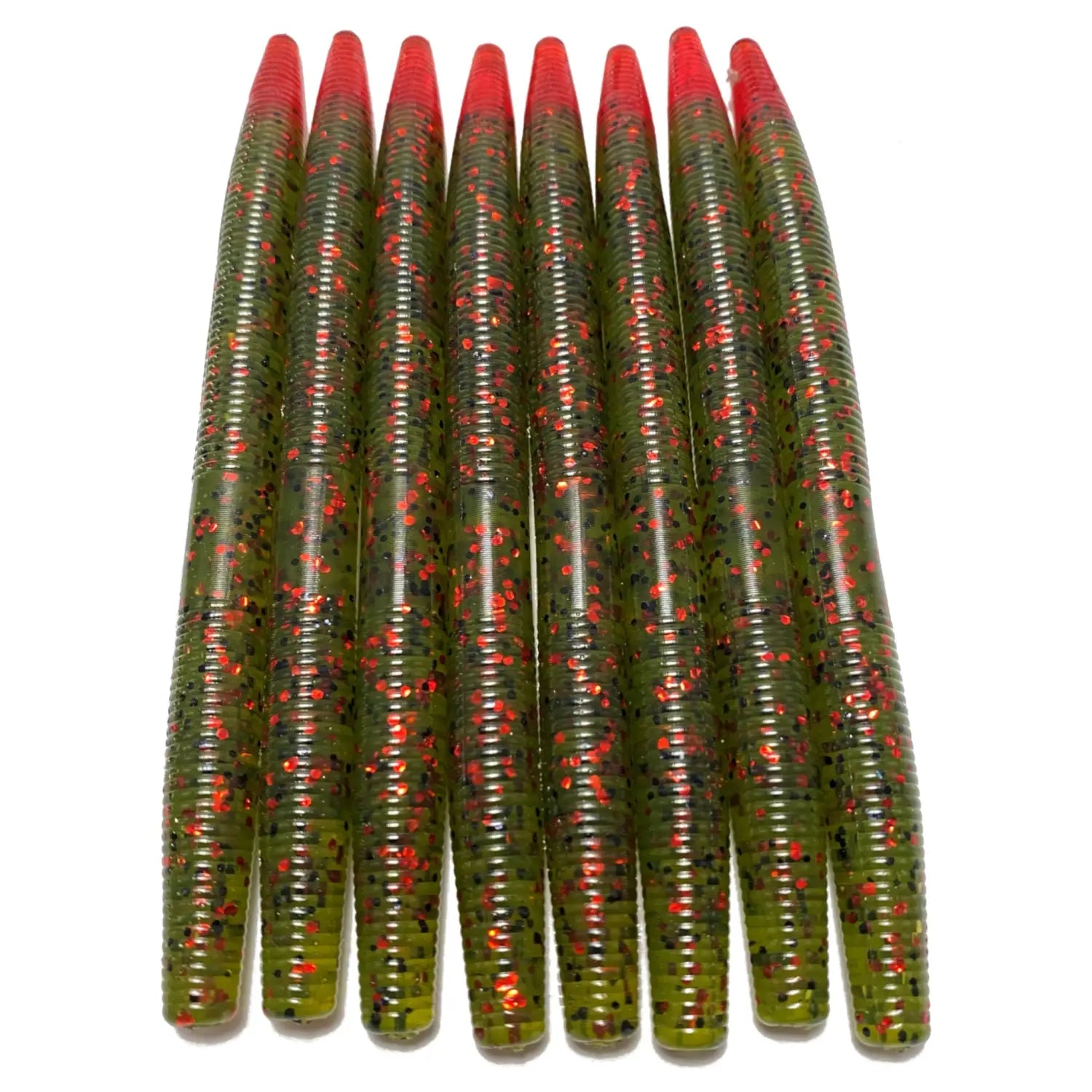
Obee 5" Stick Worm | Watermelon Red
Favorite setup: Texas rig with a light bullet weight over rocky bottom.
4. Junebug – A Southern Staple
If you fish in the South, you know junebug.
Why it works:
-
Dark purple base with green flake — stands out in stained water
-
Works well during summer months
-
One of the best colors for night fishing

Obee 6" Finesse Worm | Junebug
Insider tip: It’s magic in tannic-stained rivers and lakes.
5. Chartreuse Tip or Tail – Add Flash the Smart Way
Sometimes it’s not the whole worm, but just the tail that needs to stand out.
Why it works:
-
Tail catches a bass’s eye during slow retrieves
-
Mimics baitfish flashes
-
Ideal when bass are following but not committing
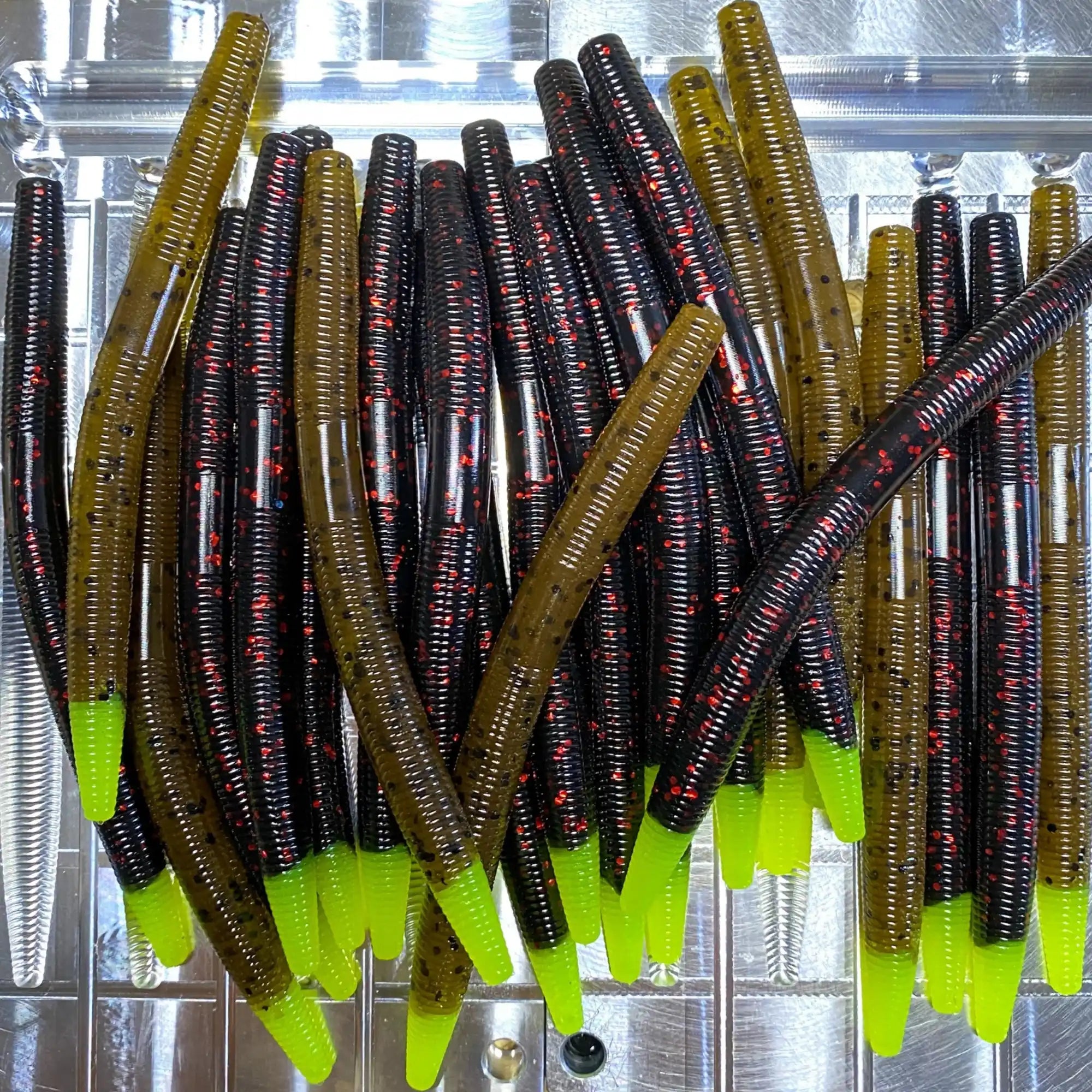
Matching Color to Water Clarity (Quick Chart)
| Water Type | Top Worm Colors |
|---|---|
| Clear | Green pumpkin, watermelon red |
| Stained | Junebug, plum, chartreuse tip |
| Muddy | Black/blue, black, chartreuse tail |
| Night Fishing | Black, black grape, junebug |
Common Mistakes to Avoid
-
Overthinking color – Location and presentation still matter more.
-
Using dark colors in clear water – Can spook bass.
-
Ignoring seasonal shifts – Lighter in spring, darker in summer/fall.
-
Not adapting to sunlight/cloud cover – Sun = flash, clouds = solid colors.
What About Scent and Flake?
Flake adds flash. Scent keeps fish holding longer. Some anglers swear by garlic or coffee scents.
👉 Pro Tip: Don’t skip out on trying flakes like:
-
Red flake in clear water
-
Blue or green flake in stained water
Frequently Asked Questions (FAQs)
1. What is the best soft plastic worm color for bass in clear water?
Green pumpkin and watermelon red are top picks because they mimic natural prey and look realistic in high visibility.
2. What color worm should I use in muddy water?
Go with high-contrast colors like black and blue or solid black. They show up better when visibility is low.
3. Are chartreuse worms good for bass?
Chartreuse tips or tails work great as an accent color, especially in stained water or during aggressive feeding times.
4. Do bass see color at night?
Not well — they rely more on movement and silhouette. Black worms are best for night fishing because they stand out.
5. Is junebug a good all-around color?
Yes, especially in southern lakes with darker water. It works year-round and is a confidence color for many anglers.
6. Can worm color affect bites that much?
Absolutely. While it’s not everything, color can make or break your day — especially if bass are finicky.
Final Thoughts: Don’t Just Fish—Fish Smart
Fishing isn’t just about casting and hoping. It’s about reading the water, the light, and the bass — and picking the right tool for the job. With soft plastics, that tool is color. So next time you’re loading up your tackle box, don’t just grab what looks cool — grab what works.
🎯 Because the best soft plastic worm color for bass isn’t just about looks — it’s about science, instinct, and experience.
